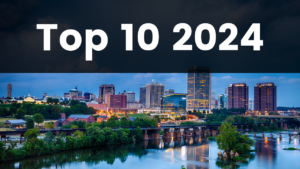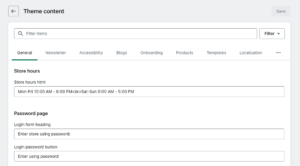Email marketing is a powerful tool for businesses to engage with their customers and increase their revenue. However, manually sending out emails to every subscriber is time-consuming and inefficient. Email automation flows (also know as workflow automations or series) are a great way to streamline the email marketing process and ensure that the right message is delivered to the right person at the right time. In this blog post, we will discuss the top 10 essential email automation flows that every marketer should know, explore the benefits of email automation, and share some example subject lines.
Before we dive in:
What is the difference between email flow and email automation?
While all email flows are email automations, not all automations are flows. In fact, automations can include sequences and transactional emails as well. Email automations can be thought of as the big umbrella that encompasses all automated email communication. This includes flows, which are automated marketing emails that are sent based on a particular trigger or customer action, such as a new subscriber. The terminology for flows may vary depending on the email marketing tool being used- for example, Klaviyo refers to them as Flows, HubSpot as Workflows, and Drip as Workflow Series – but they all function in a similar way.
Marketing automation flows are typically more complex than simple sequences of pre-written emails. They use conditional logic to determine which emails to send and when to send them based on the subscriber’s behavior. For example, if a subscriber clicks on a link in an email, they may be directed to a different email flow than someone who did not click on the link.
Transactional emails, on the other hand, are automated emails that are triggered by a specific action or event, such as a purchase confirmation or a password reset. These emails are less promotional in nature and are instead focused on providing important information to the customer. However, in some instances flow tools can be used to send transactional emails.
To recap, while all email flows are email automations, not all automations are flows. Email automations can include flows, sequences, and transactional emails. Understanding the differences between these types of automated email communication can help businesses create more effective and targeted email marketing campaigns.
1. Welcome Series Email Automation Flows

A welcome series is a sequence of emails sent to your new subscribers to introduce them to your brand and begin building a relationship with them. The first email in your welcome series should be sent immediately after a subscriber signs up. After that, emails can be spaced out over a few days or weeks. This is a perfect opportunity to recycle your best blog posts to nurture your leads and build value. Your welcome series sets the tone of your brand is essential for making a good first impression.
Here are a few example email subject lines for a welcome series:
- Welcome to [Brand Name]: Get to Know Us!
- Thanks for signing up! Here’s what you can expect from [Brand Name]
- We’re glad you’re here: Let’s Get Started!
Related post: Create a high-engagement welcome series email flow
2. – Abandoned Cart Email Automation Flows

The abandoned cart automation flow is triggered when a subscriber adds items to their cart but doesn’t complete the purchase. This flow sends a series of reminder emails to the subscriber to encourage them to return and complete the purchase. The first email in the series should be sent within a few hours of the abandoned cart, and subsequent emails can be spaced out over a few days. Copy in abandoned cart emails can be playful and lighthearted. Consider adding a GIF or fun graphic to stand out. You can also dynamically grab images of whatever was added to the cart with personalization tokens to jog your customers’ memories.
Here are a few example subject lines for an abandoned cart email:
- Your cart misses you!
- Finish your purchase before your cart expires! ⏳
- Your items are waiting for you!
- Forgetting something? 🤔
Remember to keep the subject line attention-grabbing and relevant to the subscriber’s situation to encourage them to open the email and complete the purchase.
3. – Re-engagement or Winback Flows

The re-engagement or winback flow is an email automation strategy that targets inactive or lapsed customers to encourage them to re-engage with a brand. This flow is triggered when a customer has not made a purchase or engaged with the brand in a certain period of time. The goal of this flow is to remind customers of the value of the brand and offer incentives to encourage them to make a purchase or take action. The emails in this flow may include special offers, discounts, or other incentives to encourage customers to return to the website and make a purchase. The re-engagement flow can help businesses retain customers who may have otherwise been lost and can be an effective way to boost sales and revenue. By leveraging data and personalization, businesses can create targeted and compelling emails that re-engage inactive customers and bring them back into the fold.
Here are some example subject lines for re-engagement flows:
- We Haven’t Heard From You in a While – Is Everything Okay?
- We Miss You! Come Back and Get 10% Off Your Next Order.
- We Want You Back – Here’s a Coupon Just for You.
- We Noticed You Haven’t Shopped with Us Lately – Here’s an Incentive to Come Back.
- Come Back and See What’s New – Enjoy 10% Off Your Next Order.
- We’re Sorry We Haven’t Been in Touch – Here’s a Gift to Make Up for It.
- It’s Been a While Since We’ve Seen You – Here’s a Little Something to Welcome You Back.
4. Cross-Sell/Upsell Flows

The cross-sell/upsell flow is a type of email automation that is designed to increase the average order value by suggesting complementary or higher-priced products to customers. This flow is triggered when a customer makes a purchase and sends a series of targeted emails that feature products that may be of interest based on the customer’s previous purchase history or browsing behavior. For example, if a customer purchases a laptop, the cross-sell/upsell flow might suggest related products such as a laptop case or a software upgrade. The flow can also include special offers or discounts to encourage customers to make an additional purchase. By providing personalized recommendations and incentives, the cross-sell/upsell flow can help businesses increase revenue and build customer loyalty. It is an effective way to make the most of existing customers and can be a valuable addition to any email marketing strategy.
Here are some example subject lines for cross-sell/upsell emails:
- Complete your look with our matching accessories
- Upgrade your purchase: get 20% off [ recommended upgrade ]
- You may also like: [ product name ]
- Make the most of your purchase with these complementary products
- Don’t forget to stock up on [ product type ] with this limited-time offer
5. Product Review Flows

The product review flow is a type of email automation that encourages customers to leave product reviews after making a purchase. This flow is triggered shortly after a customer has received their purchase and typically consists of a series of emails that encourage customers to share their thoughts and experiences with the product. The emails may include incentives such as discounts or rewards for leaving a review. Reviews are important for businesses as they provide social proof and can influence purchasing decisions for future customers. By automating this process, businesses can encourage more customers to leave reviews and improve their online reputation. The review flow can also provide valuable feedback for businesses to make improvements to their products and services based on customer feedback.
Here are a few subject line examples for emails requesting a product review:
- How did you like your recent purchase [ First Name ]?
- Help us improve by leaving a review
- Your Opinion Matters: Review Your Purchase and Get 10% Off Your Next Order
- Did you love your purchase? Tell us about it!
6. Birthday/Anniversary Flows

A birthday/anniversary flow is an email automation strategy that uses customers’ special dates to create a personalized and engaging experience. This flow is triggered when a customer’s birthday or anniversary is approaching and sends an email or series of emails that offers special promotions, discounts, or free gifts to celebrate the occasion. By leveraging special occasions, businesses can create a memorable and engaging experience for their customers and build a deeper connection with them. The birthday/anniversary flow can help businesses increase customer loyalty, drive sales, and improve customer retention. By using personalization and targeted messaging, businesses can create a unique and memorable experience that encourages customers to engage with their brand and make a purchase. Overall, the birthday/anniversary flow is an effective way to create a personalized and engaging experience that delights customers and drives revenue.
Some example email subject lines for a birthday/anniversary marketing email are:
- Happy Birthday! Here’s a special gift just for you!
- Celebrate your [Brand Name] anniversary with something special!
- It’s your day! Enjoy a special offer from us.
- Happy anniversary! Thanks for being a loyal customer.
- Your birthday treat is waiting inside…
7. Post-Purchase Follow-up Flows

The post-purchase follow-up automation flow is triggered when a subscriber makes a purchase. This flow sends a series of emails to ensure that the customer is satisfied with their purchase and to encourage them to make a repeat purchase. The first email in the series should be sent shortly after the initial purchase, and subsequent emails can be spaced out over a few weeks.
The goal of the post-purchase follow-up automation flow is to build a relationship with the customer, provide excellent customer service, and ultimately increase customer loyalty and repeat purchases. By showing customers that their satisfaction is a top priority, businesses can create a positive and long-lasting impression that encourages customers to return again and again.
Here are some ideas for post-purchase email subject lines:
- Thank You for Your Purchase! Here’s What’s Next
- Tips and Tricks for Getting the Most Out of Your New Product
- We Appreciate Your Business – Here’s a Discount on Your Next Purchase
- Have You Considered Our Other Products? Check Them Out Now!
- Here’s a Free Gift – Thank You for Your Purchase!
- A Quick Survey – Tell Us About Your Shopping Experience.
8. Refer a Friend Flow

The refer a friend flow is an email automation strategy that leverages word-of-mouth marketing to drive customer acquisition. These email automation flow are triggered when a customer refers a friend to the business and sends a series of emails that encourage the friend to make a purchase. The emails may include special offers, discounts, or other incentives for both the customer and their friend. By using this flow, businesses can tap into their existing customer base to acquire new customers and expand their reach. This flow can also help businesses build a community of loyal customers who are passionate about their brand and are willing to refer their friends and family. By providing incentives and making it easy for customers to refer their friends, businesses can create a powerful referral network that drives growth and increases revenue. Overall, the refer a friend flow is an effective way to leverage word-of-mouth marketing to acquire new customers and build a loyal customer base.
Example referral email subject lines:
- Share the love: Refer a friend to [Brand Name] and get rewarded!
- Give a friend a gift: Refer them to [Brand Name] and get a discount!
- Refer a friend and you both get a discount with [Brand Name]!
- Spread the word: Refer a friend to [Brand Name] and get exclusive rewards!
9. VIP Email Automation Flows

The VIP flow is an email automation strategy that is designed to reward and retain high-value customers. This flow is triggered when a customer reaches a certain threshold, such as making a certain number of purchases or spending a certain amount of money. The emails in the VIP flow may include exclusive offers, discounts, or other perks that are not available to regular customers. This flow aims to create a sense of exclusivity and make customers feel valued and appreciated for their loyalty. By targeting high-value customers and providing personalized and exclusive offers, businesses can increase customer retention and drive more revenue from their most valuable customers. The VIP flow can also help businesses gather feedback and insights from their top customers, which can be used to make strategic business decisions and improve customer experience. Overall, the VIP flow is an effective way to build customer loyalty and maximize revenue from high-value customers.
How to: Create a segment of VIP customers
Here are some example email subject lines for your VIP customers:
- You’re a VIP! Enjoy these special discounts.
- A special thank you for your loyalty.
- VIP access: early access to our latest products.
- You’re one of our most valued customers – enjoy these exclusive perks.
10. Sunset Email Automation Flows

Continuing to send emails to unengaged contacts hurts your sender reputation and makes your emails more likely to land in spam. A sunset flow automation is triggered when a subscriber has not engaged with your emails for an extended period of time, typically six months to a year. This flow sends a series of emails to try to re-engage the subscriber and encourage them to become active again. The first email in the series should be sent after a subscriber has not engaged with your emails for a certain period of time, and subsequent emails can be spaced out over a few weeks. If the subscriber still does not engage with your emails after the sunset flow, it may be time to remove them from your email list to maintain list hygiene and improve email deliverability.
Note: A sunset flow is similar to a winback flow, but not necessarily targeted at past customers like a winback flow would be. Both flows share the objective of re-engagement.
Here are some example email subject lines for the sunset flow emails:
- We miss you! Come back to [Brand Name]
- Everything okay, [Customer Name]? We haven’t heard from you in a while
- Is this the end?
Conclusion
Email automation flows are a powerful tool for email marketers to engage with their subscribers and increase revenue. The 10 automation flows discussed in this blog post are just a few examples of the many ways that automation can be used to streamline the email marketing process and improve the subscriber experience. By using these automation flows, email marketers can save time, increase engagement, and ultimately boost ROI and drive more sales for their brand.





